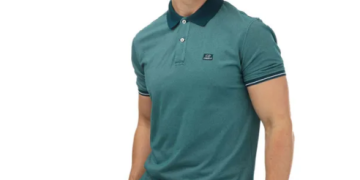Introduction
Punk fashion has long been synonymous with rebellion and innovation, challenging conventional norms and inspiring generations of style enthusiasts. Originating in the underground music scene of the 1970s, punk fashion quickly became a symbol of anti-establishment sentiment and DIY ethos.
The Birth of Punk: A Subversive Movement
Punk fashion emerged as an extension of the rebellious spirit of punk music, characterized by its raw, unapologetic aesthetic. Rejecting the polished glamour of mainstream fashion, punks embraced a DIY approach, repurposing everyday materials to create garments that defied convention. Safety pins, ripped clothing, and leather jackets became iconic symbols of punk style, reflecting a desire to disrupt the status quo.
Fashion as Protest: Subverting the Status Quo
At its core, punk fashion was a form of protest, challenging traditional notions of beauty and propriety. Through their clothing choices, punks sought to express their disillusionment with mainstream society and its oppressive norms. By embracing unconventional beauty standards and celebrating imperfection, punk fashion became a powerful tool for self-expression and individuality.
Punk Goes Mainstream: Influence on High Fashion
Despite its subversive roots, punk fashion eventually found its way into the mainstream, as high-end designers and fashion houses began to co-opt its aesthetic. The result was a commercialized version of punk, stripped of its authenticity and revolutionary spirit. Yet, even as punk became diluted for mass consumption, its influence on mainstream fashion remained undeniable.
The Enduring Legacy of Punk Fashion
Decades after its inception, punk fashion continues to exert a significant influence on contemporary style. From streetwear to haute couture, designers continue to draw inspiration from punk’s DIY ethos and anti-establishment attitude. The spirit of rebellion and innovation that defined punk fashion lives on in the work of designers who dare to challenge the status quo.
Punk Fashion Icons: Rebels and Trailblazers
Throughout its history, punk fashion has been shaped by a cast of iconic figures who embodied its ethos of rebellion and nonconformity. From musicians like Sid Vicious and Debbie Harry to fashion provocateurs like Vivienne Westwood and Malcolm McLaren, these individuals played a pivotal role in shaping the punk aesthetic and identity.
Punk Fashion and Gender Identity
One of the most radical aspects of punk fashion was its rejection of traditional gender norms and stereotypes. By embracing gender-neutral styles and challenging conventional notions of masculinity and femininity, punk fashion became a catalyst for discussions of gender identity and expression. Today, punk continues to serve as a source of inspiration for those seeking to defy gender binaries and celebrate diversity.
Revival and Reinterpretation: Punk in the 21st Century
In recent years, punk fashion has experienced a resurgence, as a new generation of designers and style enthusiasts rediscover its rebellious spirit. Contemporary interpretations of punk style blend elements of nostalgia with modern sensibilities, offering a fresh take on a timeless aesthetic. As society grapples with issues of inequality and injustice, punk fashion serves as a potent reminder of the power of fashion to provoke thought and inspire change.
Punk Fashion in Popular Culture
Beyond the realm of fashion, punk has left an indelible mark on popular culture, influencing film, music, and art. From the gritty realism of punk cinema to the anarchic energy of punk rock, the movement’s impact extends far beyond the confines of the runway. Through its portrayal in mainstream media, punk continues to challenge societal norms and provoke dialogue on issues of class, race, and identity.
Conclusion
In conclusion, the impact of punk fashion on mainstream culture cannot be overstated. From its subversive beginnings to its enduring legacy, punk fashion has served as a catalyst for change and a symbol of resistance. As we continue to navigate an ever-changing world, let us embrace the spirit of rebellion and innovation embodied by punk fashion, forging our own paths and challenging the status quo.

FAQs:
What are some key elements of punk fashion?
Key elements of punk fashion include DIY aesthetics, anti-establishment symbolism, and a rejection of traditional beauty standards.
How did punk fashion challenge traditional notions of beauty?
Punk fashion celebrated imperfection and embraced unconventional beauty standards, challenging the polished glamour of mainstream fashion.
What is the relationship between punk fashion and mainstream culture?
While punk fashion originated as a subversive movement, it eventually influenced mainstream culture, leading to its commercialization and adoption by high-end designers.
Who are some iconic figures in punk fashion history?
Iconic figures in punk fashion history include musicians like Sid Vicious and Debbie Harry, as well as fashion provocateurs like Vivienne Westwood and Malcolm McLaren.
How has punk fashion evolved in the 21st century?
In the 21st century, punk fashion has experienced a revival, with contemporary interpretations blending elements of nostalgia with modern sensibilities, reflecting ongoing social and cultural shifts.




